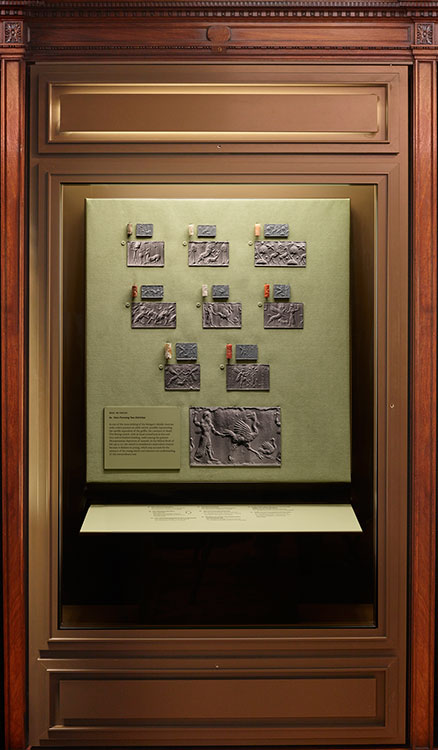
Sidney Babcock, Jeannette and Jonathan Rosen Curator of Ancient Western Asian Seals and Tablets
Pierpont Morgan’s collecting interests were broad, and the North Room display highlights his particular interest in cylinder seals from ancient western Asia. These are from the civilizations of
Mesopotamia, now modern-day Iraq. The earliest examples are more than five thousand years old.
Ancient Mesopotamian seals are among the first known objects to use pictorial symbols to communicate ideas. Many of the images represent human qualities and other concepts in the religious and poetic literature of ancient western Asia, including the Judeo-Christian Old Testament. Seals were engraved with scenes that appear in relief when rolled over clay. The impressed clay dried and hardened into a seal for doors, jars, boxes, and baskets. Their principal function in later times was to impress clay tablets on which records were inscribed in order to authenticate a document. Worn by their owners, seals offered protection and brought good luck.
A selection of seals from the Morgan’s collection are shown with modern impressions replacing the clay used in antiquity. Below each impression is a photographic enlargement that clarifies the detail and beauty of the carving. Despite being among the smallest objects produced by sculptors, seals feature imagery that enables us today to enter the visual world of the ancients.
